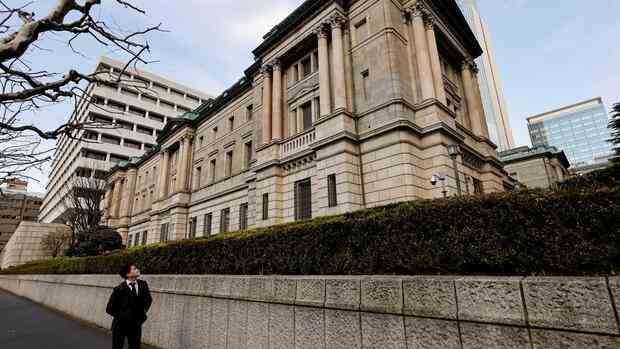The Bank of Japan unanimously decided on Wednesday to stick to its ultra-low interest rates of 0.1 percent for short-term interest rates and the ceiling of 0.5 percent for ten-year government bonds. It only slightly raised the inflation forecast for 2022 and 2024, to 3 and 1.8 percent, respectively, while expecting 1.6 percent for this year.
In December, it surprised investors by doubling the interest rate corridor for ten-year government bonds (JGBs) to just 0.5 percent. Most recently, the interest rate for ten-year JGBs rose above the central bank’s limit for the fourth trading day in a row. Investors had increasingly bet that the central bank would tighten its monetary policy further.
The investors then had to cancel some of these bets. As a result, Japanese government bond yields fell more than they had in decades. Ten-year bonds fell from 0.505 percent to as low as 0.360 percent. The two-year bond yield turned negative from 0.046 percent.
Top jobs of the day
Find the best jobs now and
be notified by email.
The development is closely linked to market participants’ expectations of interest rate developments. When a central bank tightens monetary policy, bond yields generally rise.
The yen also came under heavy pressure against many currencies. The Japanese currency fell more than two percent against the dollar and the euro. After all, investors in other currency areas have the prospect of higher interest rates and thus higher returns.
Conversely, big company shares rose sharply as a weaker yen boosted their overseas sales. The leading Japanese index, the Nikkei, jumped 2.5 percent.
Controversial monetary policy of the Bank of Japan
The strong swings underline the nervousness of the markets when it comes to the monetary policy of the third largest economy in the world. Hedge funds have been betting against the Bank of Japan since the US Federal Reserve raised interest rates to fight inflation. They expect that the Japanese monetary authorities will have to abandon their innovative policy of yield curve control, which is the bedrock of Japan’s current monetary policy. A turnaround in monetary policy would be felt globally given the importance of Japan.
With yield curve control, the bank does not set a key interest rate, but controls the entire yield curve. So it pushes interest rates for short-term bonds to minus 0.1 percent. For ten-year JGBs, the interest rate corridor is around zero.
Longer-dated bond rates let them move more positively to stabilize insurers who need long-dated bonds to cover their long-term liabilities. This policy is considered very controversial because it is associated with high costs and, according to experts, distorts the market.
>> Read here: Relaxed monetary policy, high-spending tourists – Japan is hoping for rising share prices
In December, the BoJ surprisingly widened the long-term trading corridor to between minus and plus 0.5 percent. One wants to improve the functioning of the market, it said. The move has already triggered violent reactions on the markets. Since December, the Bank of Japan has had to buy JGBs for about 33 trillion yen (about 240 billion euros) to defend the ceiling of its interest rate corridor. It is also becoming increasingly difficult to find buyers for the bonds.
All of this increased confusion about the future course. The Investor Alliance Bernstein even warned this week that investments in Japanese government bonds should be stopped entirely due to falling liquidity. Bloomberg quoted a portfolio manager as saying that the central bank had only two options to resolve the dilemma: it would break away from control of the yield curve, or it would extend the maturity of zero-interest loans from two to five years to keep banks going to encourage the purchase of government bonds. This could help to ease the pressure on government bonds until the central bank’s March meeting.
Another problem: the increased influence of foreign investors. So far, Japan has been considered immune to the pressure of the international financial markets. Because most of the bonds are held domestically, while foreigners own only 14 percent of the debt. But because of the Fed’s huge purchases, they are now the second largest investor in the non-Fed controlled part of the market, after Japan’s insurers, and are therefore increasingly determining prices.
Bank of Japan: Management change imminent
At the end of his ten-year term in office – he is leaving office in April – central bank governor Haruhiko Kuroda is under more pressure than ever to justify himself. So far, he has always rejected rate hikes. The Bank of Japan expects that inflation, which is low by international standards, will soon fall below its inflation target of two percent. In November it was 3.8 percent.
He still gets away with it with many economists. Stefan Anrick from Moody’s Analytics says: “The latest economic data does not call for a tightening of monetary policy.” He sees no signs of overheating demand. Inflation is largely imported, the yen is strengthening after last year’s collapse and global inflation has peaked.
He does not want to rule out a politically motivated monetary policy change with the central bank’s new management team. But Anrick says, “It’s hard to see what might justify a broader move away from low interest rates in general.”
More: Harvard economist Kenneth Rogoff talks about the state of the world economy
